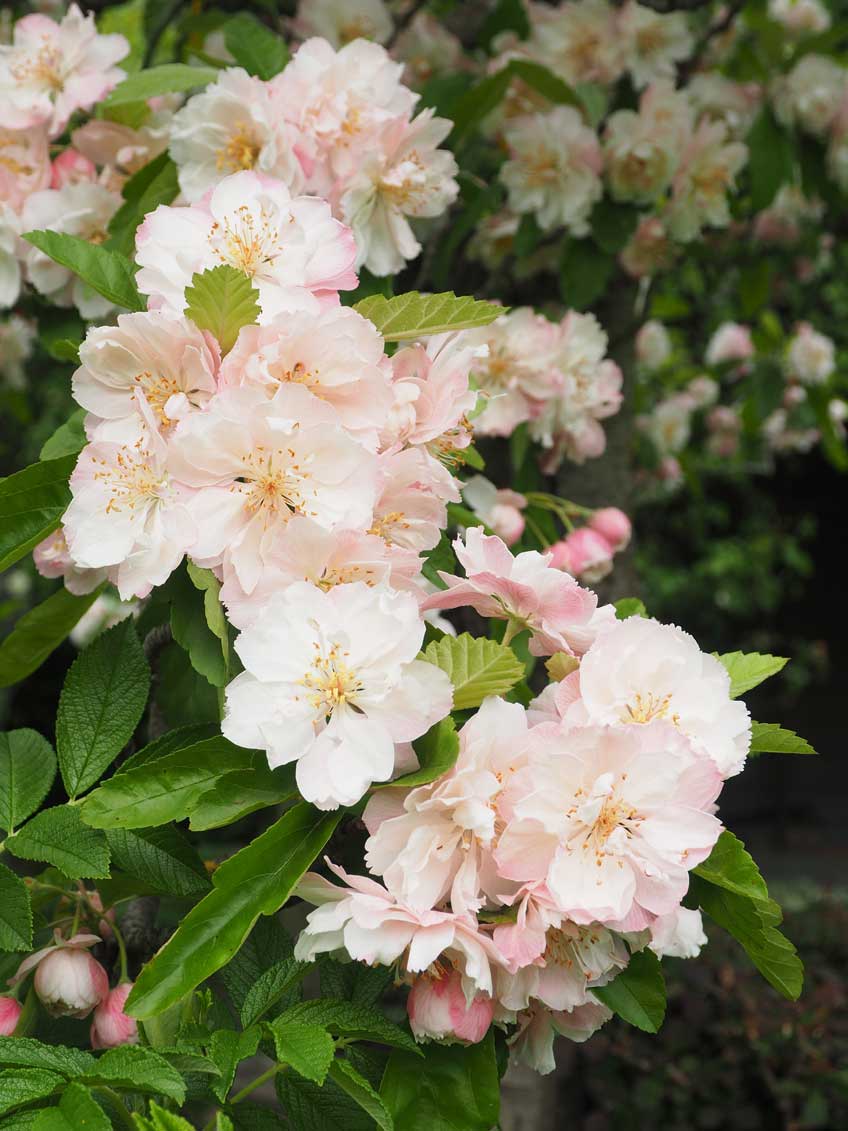Best known for sauvignon blanc, the Marlborough region in the north of New Zealand's South Island is also a centre of great garden making.
Barewood is one of the gems.
.jpg)
Words and pictures: Robin Powell
Barewood is hidden from view, nestled into the arms of mature trees, so when I squeezed through a gap in the hedge I caught my breath at the vision of
a country farmhouse fantasy suddenly before me. The century-old white weatherboard cottage and its deep verandas are fringed with softly drifting tassels
of white wisteria. It’s dreamily romantic, and just what Carolyn Ferraby always thought the house needed.

“I’ve always wanted soft colours around the house,” she says. “People say the New Zealand light demands strong colours but I disagree. Initially I had
roses as well as a single plant of the Japanese wisteria ‘Shira Noda’, but even though I loved the simplicity of ‘Lamarque’, once I saw that lacy fringe,
I knew it had to be wisteria.” Reaching a flowering peak in early November (just in time for Garden Marlborough, the four-day festival founded by Carolyn
and fellow gardening friends, that opens dozens of private gardens to visitors), the wisteria goes on to provide fresh shade all through a long hot
summer.

Banished from the front of the house the lovely white rose ‘Lamarque’ now decorates the tennis court terrace. The tennis court itself, which operates as
a cool green contrast to the planting around it, is edged by a low wall of charming old bricks, taken from a local pub that was being demolished. “It
was a case of if you took them away they were yours, which was fantastic,” says Carolyn. The soft rose tones and worn edges of the old bricks are reminiscent
of the great walls of Sissinghurst, a garden Carolyn loves and has visited many times.
The curtsying garden
In planning the garden Carolyn had in mind Gertrude Jekyll’s injunction that the garden must curtsy to the house, so everywhere the garden serves the interests
of the house, connecting it to history and its position at the centre of a working farm.So, instead of an avenue of cherry leading away from the house
to the pond and a summer house, Carolyn decided that ‘prunus is suburban’ and used a sophisticated version of the hawthorn that pops up in hedgerows
and paddocks throughout the district. The grass underneath, in another reference to what happens outside the garden’s fences, is simply paddock grass.
“Ever since I started gardening I've read that a garden should have green interludes for relaxation, and that’s what that area is. In the summer we
take long tables down there and have lunch under the green. It’s lovely.”
.jpg)

A path under the arching hawthorn leads to the visual full stop of a double summerhouse. Double? When Michael McCoy visited with a Ross Gardens Tour group
a few years ago Carolyn commented that her only disappointment in the garden was that she hadn’t placed the summerhouse a bit further back so that
she could see the pond from its seats. “Michael said it’s no problem. Just ask Joe [her husband] to cut a hole in the back of the pavilion and build
another summerhouse behind it.” Fortunately, she adds, Joe is the kind of garden partner who builds whatever is required - walls, terraces, fences,
or cutouts in summer houses. “He does say I have a degree in nagging - with honours!” she jokes.
It’s a perfect solution. From the start of the walk, the two buildings read as one, but as you near them it becomes clear there are two options for lounging
in the summer.Carolyn gained not just a view of the pond, but extra space to play with behind the original summerhouse.

Eating well
Behind the house is a walled potager, edged in espaliered fruit, and with flowers in amongst the vegetables for both practical reasons - pollinators drawn
to the flowers increase the fruit harvest - and aesthetics. A potager too is essential when living 40 minutes from the nearest town. “I love cooking,
so the potager is a favourite part of the garden,” says Carolyn. “Being able to pick dinner, knowing that there are no chemicals in my food, is fantastic.”

On the other side of the potager a gate opens on a long avenue of the statuesque crabapple, Malus tschonoskii, chosen for its upright form, which
Carolyn envisaged forming a cathedral-style arch of foliage high overhead. There is a magic atmosphere beneath its lofty arches, and in autumn the
brilliant colours of the foliage are lit by the sun like stained glass. It’s a vision she is especially pleased to have brought to life, and it’s by
no means the last. After decades Carolyn is still developing new areas of the garden as it extends its curtsy to the house.
More Marlborough
There are 27,000 acres of vines in Marlborough, and many cellar doors -and wines! -to try.My pick is Hunter's, the multi-award-winning winery of wine pioneer
Jane Hunter To explore a handful of wineries, book an afternoon winery tour with Sounds Connection.
A fifth of New Zealand’s entire coastline winds through Marlborough, in part due to the network of drowned valleys that makes up Marlborough Sounds, so
getting on the water is a must. The Beachcomber Cruises mailboat will drop you off at various points along the famous Queen Charlotte Track, and transfer
your luggage from lodge to lodge. With less time - or dodgy knees! -book into Furneaux Lodge for a night or two and walk only as far as you feel like.

Come with us
Our New Zealand in November itinerary includes some of the gardens open for Garden Marlborugh, including Barewood. Call 1300 233 200 for details.